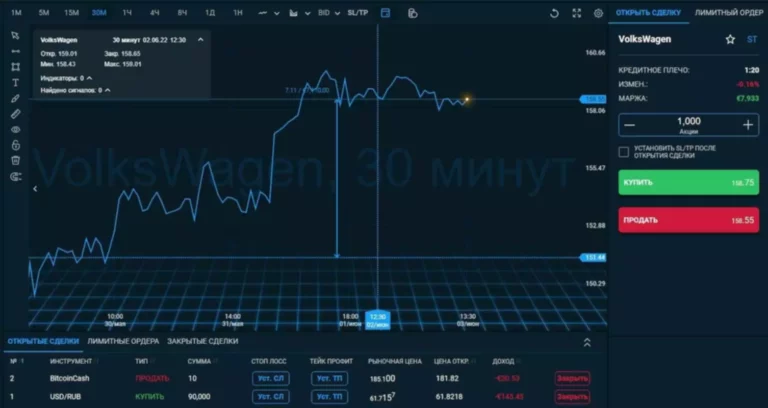Critics argue that solely analyzing historic value information is an incomplete method to determine if a inventory might rise or fall in the future. The ideal strategy for most traders is to include both basic and technical analysis. Qualitative factors of curiosity to basic analysts may embody a company’s business mannequin, competitive benefits, strengths and weaknesses, leadership type and organizational construction. Quantitative concerns might embrace revenue, profits, free money circulate, and return on fairness inventory turnover ratio. Fundamental analysts attempt to determine an correct valuation for a agency and examine this towards its present inventory value to determine whether it’s undervalued or overvalued.

Also, guarantee your stocks are floated on a significant (well-regulated) exchange like the LSE, DAX, NYSE, or NASDAQ. You wish to be a successful stock investor but don’t know where to begin out. Technical analysis can then assist you to decide when and where to enter a inventory, where to position your cease loss, and the means to handle your place. Revenue is the amount of income an organization brings in over a sure time frame via things like sales, fees, and royalties.
The price-to-earnings (P/E) ratio is the closest factor to a price tag on a inventory. To calculate P/E, take the stock’s worth (P) and divide it by the latest annual earnings per share (E). There are two forms of fundamental evaluation, qualitative and quantitative.
Quantitative Fundamentals To Contemplate: Financial Statements
If the stock has the capability break by way of this resistance on high volume, it could rally additional to Rs. 120. Let us have a look at an example of technical evaluation on a hypothetical Indian firm called ABC Ltd. Effective portfolio designs start with an understanding of the organizing construction used to categorise and consider the hundreds of publicly held companies offering funding opportunities. Here, we have a preferred indicator known as the Relative Strength Index or Wilders RSI.

Fundamental evaluation requires analyzing monetary statements, valuation fashions and economic components which is more complex. Technical evaluation offers you with a approach to time the market and determine optimum entry and exit points. Through trend recognition and reversals, technical analysis aids short-term trading by taking into account worth actions and quantity.
Developed by J Welles Wilder, this indicator measures the strength of any stock through the use of its common internet up closing day costs by its average web down closing costs for the period set. Price Down–Volume Down (PDVD) in a downtrend can suggest that the retreat is slowing or beginning to end as fewer persons are thinking about buying or selling the stock at these prices. In an uptrend, this will likely indicate the stock is stopping for a breath or due to a pullback before continuing on its upward trajectory. Hence, PDVD also suggests a continuation of the first downtrend or a pullback and a possible continuation of an uptrend. Suppose you plan to construct a portfolio of dividend shares outside of the USA & Canada.
Personal biases or differing interpretations of knowledge can result in varying conclusions about a company’s value and prospects. Investors should concentrate on these biases and search to corroborate analysis with multiple sources. The incontrovertible reality that it is a main indicator, versus transferring averages, which are lagging, can thus indicate future directional changes. There are some essential traits of volume and value within the stock market.
Basics Of Fundamental Evaluation
This in-depth evaluation might help protect your investments from volatile market actions and unforeseen circumstances, providing a layer of security that purely technical analysis might not provide. Remember, information is power on the planet of buying and selling; the more you understand about your investments, the better geared up you are to navigate the complexities of the market. The main distinction in perspectives between buying and selling and investing lies in the strategy to market participation. Traders, typically using technical analysis, look for fast gains from market volatility. Investors, with a elementary analysis strategy, seek long-term progress and stability, aiming to construct wealth over time via cautious number of shares primarily based on intrinsic worth. Technical analysts have a look at charts, worth motion, technical indicators, and trading volume to analyze a stock.
Fundamental analysis relies on financial info reported by the company whose inventory is being analyzed. Ratios and metrics are created using the info which indicate how an organization is performing in comparability with related companies. Many buyers will think about the average of these estimates and assume that the stock’s intrinsic value could additionally be near $25. Often buyers consider these estimates highly related as a result of they need to purchase shares trading at prices considerably beneath these intrinsic values.

To kickstart your journey into basic evaluation, take a look at How to Read Fundamentals for Stock Traders, a comprehensive guide designed to put the groundwork for making knowledgeable funding choices. Apart from the historic stock worth, charts often show a stock’s buying and selling volume as nicely. Trading volume is the number of shares that had been traded in a sure time-frame — that depends on the chart settings. Fundamental evaluation involves trying through a company’s internal workings — its management, business model, financials, and economic circumstances. Let’s try a variety of the major metrics and ideas used in fundamental evaluation.
Kinds Of Inventory Analysis
A dealer might even see this as a possibility to promote as high as potential earlier than the stock falls any lower, or keep away from the stock totally. You also can assess how sensitive your models are to changes in assumptions, and you may replace your models to adapt to market adjustments. Using these practices, you also can make your basic and technical analyses extra sturdy, adaptable, and consultant of the market’s complexities.
- Let’s say a elementary analyst holds a inventory that trades at $100, but the analysis reveals it’s value $50.
- What’s necessary is that the inventory you analyze meets your criteria for value and that your evaluation creates actionable information for you.
- A nice resource for more in-depth analysis on shifting averages may be found here.
- Technical analysts additionally take a glance at shifting average convergence divergence (MACD).
- Analysts may additionally use data gathered by one other agency, corresponding to CSIMarket.
- This choice process is important for isolating the most effective investment opportunities within an business.
It combines the fundamental evaluation’s danger assessment capabilities with the technical analysis’s timing. Thus, it can be appropriate for short- and long-term funding methods. A price ratio comparison to opponents can help identify a inventory that is (potentially) unfairly appeared down on within the stock market (and thus trading cheaply). Professional technical analysts typically settle for three basic assumptions for the discipline. The first is that, similar to the efficient market speculation, the market discounts every little thing.
Fundamental analysts evaluate the qualitative and quantitative features of a enterprise to determine if a stock is undervalued or overvalued. The key thought is that the value of a inventory will ultimately converge to its intrinsic value over time. Fundamental evaluation goals to grasp the intrinsic worth of a inventory https://www.xcritical.com/ based on the general well being and performance of the company and business. Analytical approaches, including the research of articles, examples, situations, and ideas, can present traders with priceless insights and a deeper understanding of market dynamics.

Earnings, bills, belongings, and liabilities are all essential traits to elementary analysts. Fundamental and technical analysis both instruments used to investigate and consider shares for funding functions. The specific strategies differ, while the top aim is identical – to determine good shopping for or selling opportunities. Fundamental traders make new trades or change positions relatively occasionally based on vital modifications in a company’s worth or growth prospects.
How Do Bonds, Shares, And Forex Impression Investment Strategies?
Both strategies are used for researching and forecasting future tendencies in stock prices, and like any funding strategy or philosophy, both have their advocates and adversaries. Fundamental merchants rely on events like earnings releases, acquisitions, new merchandise, or macroeconomic adjustments that drive a company’s valuation and inventory value. Technical traders depend on indicator signals, breakouts, pivot factors, or candlestick patterns that could catalyze quick term price adjustments regardless of information or events. The historic price motion and indicators counsel the uptrend will doubtless continue a minimum of in the quick term. The inventory holding above key shifting averages and break via resistance could also probably extend features to new highs. However, a reversal at resistance, drop below shifting averages, or RSI above 70 would show weakening momentum and point out the uptrend may be ending.

For example, you would possibly carry out a basic evaluation of a bond’s worth by taking a glance at economic factors such as interest rates and the overall state of the economic system. Then, you’d consider the bond market and use monetary data from comparable bond issuers. Finally, you’d analyze the financial data from the issuing company, together with external components similar to potential modifications in its credit standing. You might also learn via the 8-K, 10-Q, 10-K, and the issuer’s annual reviews to search out out what they are doing, their targets, or other issues.
Traders want to maintain stocks which are in an uptrend, as the price is moving upward. And they either steer clear of downtrending shares difference between fundamental and technical analysis — or they brief promote them. Fundamental analysts evaluate EPS figures for various quarters, in addition to the shares of competing companies.
